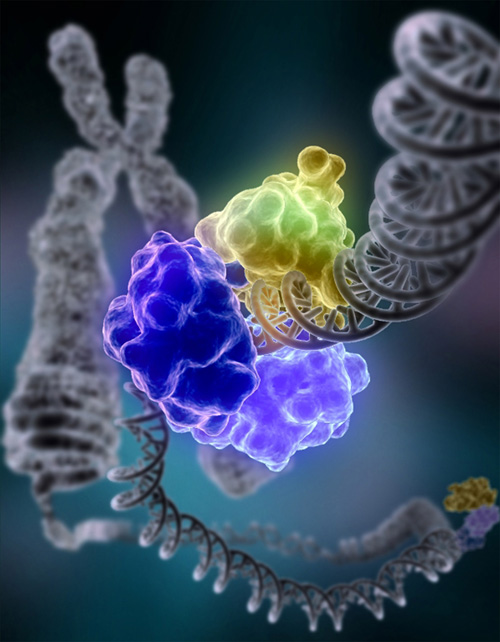A meta-analysis of gene expression signatures for blood pressure and hypertension in 7017 individuals from 6 international studies found of 7717 genes, 34 were most differentialy expressed including GNLY. Enrichment analysis for the diastolic and systolic gene group's associated strongly with NK cell mediated cytotoxicity and 13 other pathways including antigen processing and inflammatory response.
A study of centromere heterochromatin (connected with central spindle) surprisingly showed that distant euchromatic regions, enriched in repressed methylated genes also interacted with the hierarchical organization of centromeric DNA. These 3D spatial interactions (at a distance) are likely mediated by liquid-like fusion events and can influence the health of individuals. Repressed gene's were identified as transposable elements, sequences often associated with pathogenic DNA insertions that have been persistently retained.
KIF5B is an interaction partner of ADP-ribosylation factor-like 8b (Arl8b), which is required for NK cell–mediated cytotoxicity that drives polarization of lytic granules and microtubule-organizing centers (MTOCs) toward the immune synapse between NK and target cells. Silencing experiments that led to failure of MTOC-lytic granule polarization suggest Arl8b and KIF5B together control the critical step in NK cell cytotoxicity.
KIF5B is also a critical transporter of p53 and c-Myc to the cytoplasm for degradation. However, subcellular localization of Arl8b and p53-dependent cell death was shown to occur through knockdown of acetylation subunit NatC. As a consequence, p53 is stabilized, phosphorylated and significantly activates transcription of downstream proapoptotic genes. In the absence KIF5B, or presence of mutants p53 and c-Myc aggregate in the nucleus where they signal DNA damage-induced apoptosis through the control of p53 by endogenous c-Myc (in vivo).
Finely tuned, frequently used KIF5B in NK cells expressing GNLY may induce effects on local tissue blood pressure, as was discovered by expression of Renin-Angiotensin vasoactive proteins AT1, AT2, and ANP in pregnancy-induced uterine NK cells. Inflammation signaling, via tissue bound NK cells may result from stretch-mediated release of angiotensin II, which is coupled with p53 acetylation apoptosis and activation of p53. This may prolong upregulation of the local renin-angiotensin system, increase susceptibility of target cells to apoptosis and signal adaptive immune cells.
Somewhere in the balance between NatC knockdown induced apoptosis and angiotensin II induced apoptosis p53 may direct traffic to keep your cells healthy!







